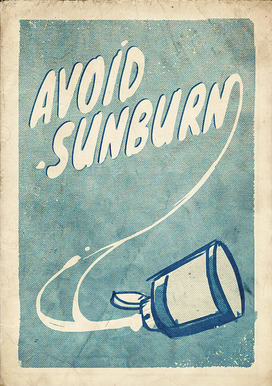May is skin cancer awareness month. It is also the start of warmer weather and sunnier days. This is the second blog post about sun and skin safety.
What is UV radiation? Why do we need to worry about it and protect against it? I have a base tan, why do I need sunscreen? Which SPF sunscreen should I use?
What is UV radiation?
Ultraviolet (UV) radiation is a type of electromagnetic radiation produced by the sun (and some man made sources like tanning beds). There are 3 types: UVA, UVB, and UVC. The differences between them have to do with wavelength. UVC is the strongest (shortest wavelength), but is absorbed in the earth’s ozone layer. UVB light has a medium wavelength and is the stronger of the two types that affect humans. It has a negative impact on your skin cells, and the DNA within them, having a direct link with skin cancers. UVA radiation has the longest wavelength, and is the weakest. It is a stronger contributor to longterm skin damage (wrinkles, leathery skin, etc.) than skin cancer. The term broad spectrum refers to UVR that includes both UVA and UVB.
Why do we need to protect against UV radiation?
According to the ultraviolet-radiation-related exposures in the Report on Carcinogens (1), broad spectrum UVR causes DNA damage, suppression of the immune system, tumor promotion, and mutations in the p53 tumor-suppressor gene leading to skin cancer. Overall, the final result depends on the type of UVR and the ability of our bodies to repair
 the damaged cells. In cases where skin cancer resulted, the p53 tumor-suppressor gene mutation was present in 90% of human squamous-cell carcinomas. Even more importantly, this gene mutation was found in 74% of sun-exposed skin and 5% of unexposed skin. This indicates the importance sun exposure has on risk of developing skin cancers.
the damaged cells. In cases where skin cancer resulted, the p53 tumor-suppressor gene mutation was present in 90% of human squamous-cell carcinomas. Even more importantly, this gene mutation was found in 74% of sun-exposed skin and 5% of unexposed skin. This indicates the importance sun exposure has on risk of developing skin cancers.
I have a base tan, why do I need sunscreen?
Sunburns are a physiological response to damaged skin cells. Not only are skin cancers more commonly found on areas on the body that have had previous sun exposure, but having had serious sunburns in the past increases your risk of developing these cancers (more sunburns associated with higher risk). Melanin production is also a result of sun exposure. Althougth melanin may help to reflect UVR with a sun protective factor (SPF) of 2-4 (2) during future sun exposure, it was not able to protect your cells during the event that caused the resultant increase in melanin.
Sun Safety Tip #3
Avoid burning. This increases your risk of developing skin cancer (see above).
Sun Safety Tip #4 – Which SPF sunscreen should I use?

- Use broad spectrum sunscreen – it protects against UVB and UVA radiation
- Apply before going outside. Remember to reapply immediately after swimming, sweating, and after 2 hours. Read the labels for correct usage.
- Environment Canada provides a UV index of the intensity of the suns rays. The higher the number, the stronger the radiation. The numbers range from 1-11 in Canada. Keep in mind, this number changes throughout the day. The weather network provides UV reports. You can use this to plan your day appropriately.
- Sunscreens have a range of SPF ratings (3):
- SPF 15: For every 15 minutes spent in the sun, you get the equivalent of 1 minute of UVB rays. Filters 93% of UVB rays.
- SPF 30: For every 30 minutes spent in the sun, you get the equivalent of 1 minute of UVB rays. Filters 97% of UVB rays.
- SPF 50: For every 50 minutes spent in the sun, you get the equivalent of 1 minute of UVB rays. Filters 98% of UVB rays.
- SPF 100: For every 100 minutes spent in the sun, you get the equivalent of 1 minute of UVB rays. Filters 99% of UVB rays.
- As you can see, as you increase the SPF, the amount of UVB rays filtered increases (although the difference becomes smaller)
- No sunscreen can block 100% of UVB radiation
- Use SPF 30 or higher when outdoors for an extended period of time. Depending on your skin type, higher SPF may be advisable. (What is your skin type?)
- American Academy of DermatologyDon’t forget to read the previous blog post on sun and skin safety for tips #1 and 2 and check back soon for the third and final blog post on this topic with tips #5 and 6.
Resources
(1) Report on Carcinogens (Ultraviolet Radiation Related Exposure), 13th Edition
(2) U.S. Food and Drug Administration. Radiation-Emitting Products and Procedures – Tanning
(3) American Cancer Society: Skin Cancer
National Council on Skin Cancer Prevention
Canadian Dermatology Association
Skin Cancer Foundation
Images
Sunbath – by Lisa Widerberg – CC BY
Avoid Sunburn – by Juhan Sonin – CC BY
